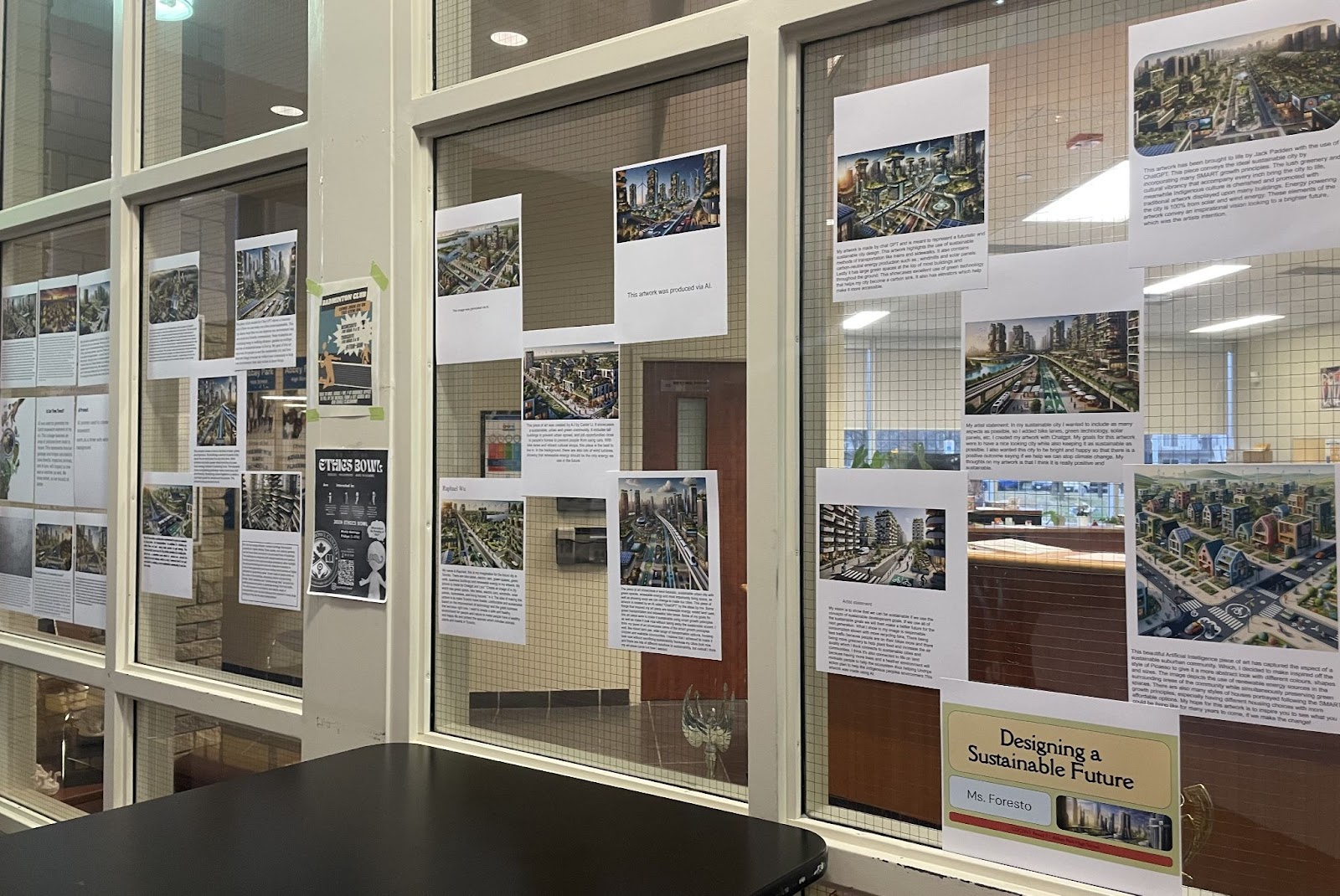Abbey Park HS utilizes AI as part of Grade 9 environmental project
Grade 9 students at Abbey Park High School (APHS) utilized elements of Artificial Intelligence (AI) to create a project designed to highlight the importance of environmental sustainability ‒ culminating in a gallery walk at the Oakville school where the community could view and discuss the work.

Genevieve Vessio, a teacher at APHS, says students addressed issues related to urban growth and conveyed solutions for sustainable communities by creating pieces of art with the option of using AI. Student art was displayed in a gallery for the APHS community to see what had been created.
“We had discussed the value of art, both in terms of remaining hopeful about the future, and in terms of spreading awareness,” Vessio says. “Students began by reflecting on the following questions: How can we make our communities both liveable and sustainable while accommodating population growth? How might we use art to communicate solutions in a public-facing forum? How might we build a sustainable and livable community without compromising the land? How can we design art that also upholds rights around the United Nations Declaration on the Rights of Indigenous Peoples, Human Rights, accessibility and land rights?”
As the Geography (CGC1W) curriculum emphasizes the use of emerging technologies, students then had the choice to create an original piece of art or use AI to generate their art or certain aspects of their art. If they opted to use AI, Vessio says students prepared detailed and thoughtful prompts so that the AI generated art reflected their vision.
“This was its own challenge, as students quickly realized that the AI did not always interpret their prompts as they had hoped. Students had to revise and tweak their prompts in order to achieve their desired outcome.”
After designing their art, students created an artist statement to explain their artistic vision. Finally, they completed a reflection expressing how their art illustrated concepts explored in class such as the Principles of Smart Growth, the United Nations Sustainable Development Goals and the United Nations Declaration of Rights of Indigenous People.
Students say the activity was inspiring and having the option to use AI was a positive learning experience.
“That is why I think it is important to understand how to use AI ‒ there's a fine line between using AI as inspiration and making AI your entire project,” says Heather Dong, a Grade 9 student. “As the people using AI, we need to be able to realize how we can use it while not entirely relying on it. Furthermore, AI has many shortcomings that I identified through my exploration. I realized that AI is exactly how people describe it as a machine following a command.”
Says Grade 9 student Emilio Rodriguez De La Torre: “I think that AI is a tool that can be used for the betterment of humanity, yet it also poses a massive threat as to be effective it requires an equally powerful force of will and responsibility. Similarly to my art piece, it really is up to us to determine the outcome of the implementation of AI into the modern world as it could easily solve many of our global issues, or it might create even more problems.”
As emerging technologies like Generative Artificial Intelligence (GenAI) become more prevalent, the Halton District School Board has proactively developed system principles, standards and direction to ensure the safe, effective and responsible use of these digital tools for student learning. The HDSB is providing ongoing professional development to staff around using AI to support student learning and enrich classroom experiences.
“The HDSB is committed to innovation and developing global competencies while ensuring the responsible deployment of digital GenAI tools and safeguarding students’ privacy and personal information,” says Jonathan Shoss, HDSB’s Superintendent of Information Services. “Our goal is to create learning environments where AI technologies empower rather than replace the human aspects of education. The Board embraces these technologies thoughtfully to prepare students for a future where these technologies are everywhere.”
Vessio says as AI becomes more prevalent, it is crucial that students are empowered to think critically about their AI generated media consumption and how we can build sustainable communities.
“My hope is that students truly deepened their understanding of sustainable communities, and feel a sense of optimism and agency about what is possible in their lifetimes.” “I also hope that students have a greater awareness of the opportunities and limitations of Generative Artificial Intelligence.”




